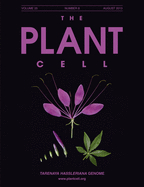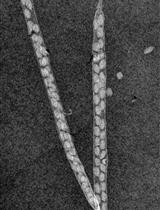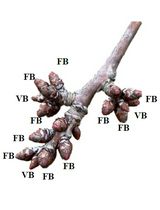- EN - English
- CN - 中文
Grafting Arabidopsis
拟南芥嫁接实验
发布: 2014年07月05日第4卷第13期 DOI: 10.21769/BioProtoc.1164 浏览次数: 17439
评审: Ru Zhang
Abstract
In Arabidopsis thaliana, hypocotyl micrografting has been used to investigate transport of flowering signals, mobile silencing signals and other peptides, proteins and secondary compounds. The effects of transported signals on target tissues require that a good vascular connection is re-established across the graft junction between the cut hypocotyls (stumps) of the root (rootstock) and shoot (scion) tissues. We outline here a method that requires only that the cut stumps be placed in close proximity, so that they touch, followed by 3-5 days of undisturbed recovery time during which the grafts are allowed to dry out somewhat. This method is quick, easy to monitor and has up to 90% success rate.
Materials and Reagents
- Young Arabidopsis seedlings (grown for 3-6 days on ½ MS containing agar plates)
- Sterile distilled water
- 96 % ethanol
Equipment
- Sterile 9 cm petri dishes
- Sterile standard Whatman No. 1 filter paper circles Grade 1:11 µm with diameter about 0.5 cm smaller than the sterile petri dish (autoclaved wrapped in foil beforehand) (8.5 cm diameter) (Whatman)
- Sterile cellulose nitrate filters (Whatman, catalog number: NC 45 ST)
- Sterile forceps
- Sterile 1 ml pipette tips
- 1 ml pipettor
- Micropore tape (3 M, MicroporeTM)
- Sapphire knife holder (World Precision Instruments, catalog number: 500317 ) or diamond knife plus blade (Electron Microscopy Sciences, Diamond Dissecting Knife, Type M-M, catalog number: 72025 )
- Sapphire blade (World Precision Instruments, catalog number: 504072 ) or diamond blade (Electron Microscopy Sciences, Blade Resharpening, Type M-M, catalog number: 72025-R ; Electron Microscopy Sciences, Replacement Blade, Type M-M, catalog number: 72025-L )
- Flow cabinet mounted dissecting microscope with a minimum of 5x magnification
Note: Any brand we have tried worked.
- Parafilm
- Hot glass bead sterilizer (any brand) unless using 96 % ethanol for sterilization
Procedure
文章信息
版权信息
© 2014 The Authors; exclusive licensee Bio-protocol LLC.
如何引用
Andersen, T. G., Liang, D., Halkier, B. A. and White, R. (2014). Grafting Arabidopsis. Bio-protocol 4(13): e1164. DOI: 10.21769/BioProtoc.1164.
分类
植物科学 > 植物生理学 > 植物生长
植物科学 > 植物发育生物学 > 形态建成
您对这篇实验方法有问题吗?
在此处发布您的问题,我们将邀请本文作者来回答。同时,我们会将您的问题发布到Bio-protocol Exchange,以便寻求社区成员的帮助。
Share
Bluesky
X
Copy link













